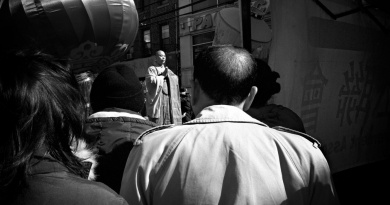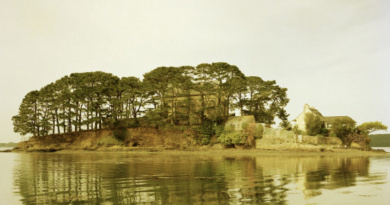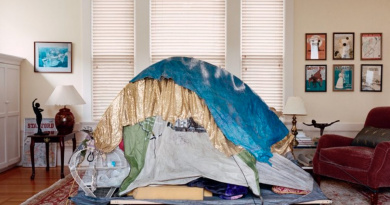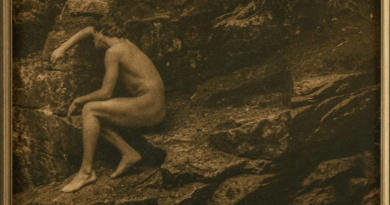As the heir to a tradition of images that is strongly interwoven with cultural anthropology, Fábio Baroli’s most recent work represents a poetic gesture of restitution of the everyday and the vigorous musculature of the regional imaginary. His narrative, which is informed by a raw and forceful naturalism, centers its attention on rural life, its difficulties and the affective relationships that result from it. Each individual depiction is a kind of radiograph of events, a historic record, and a homage to the agrarian culture of Brazil and Latin America. In his case, the painting appears carnal, stimulates the appetite, and engenders a virtually bulimic fear of an object of desire, which is ultimately nothing other than life itself. In this way, painting confers clarity as well as significance to historical progress.
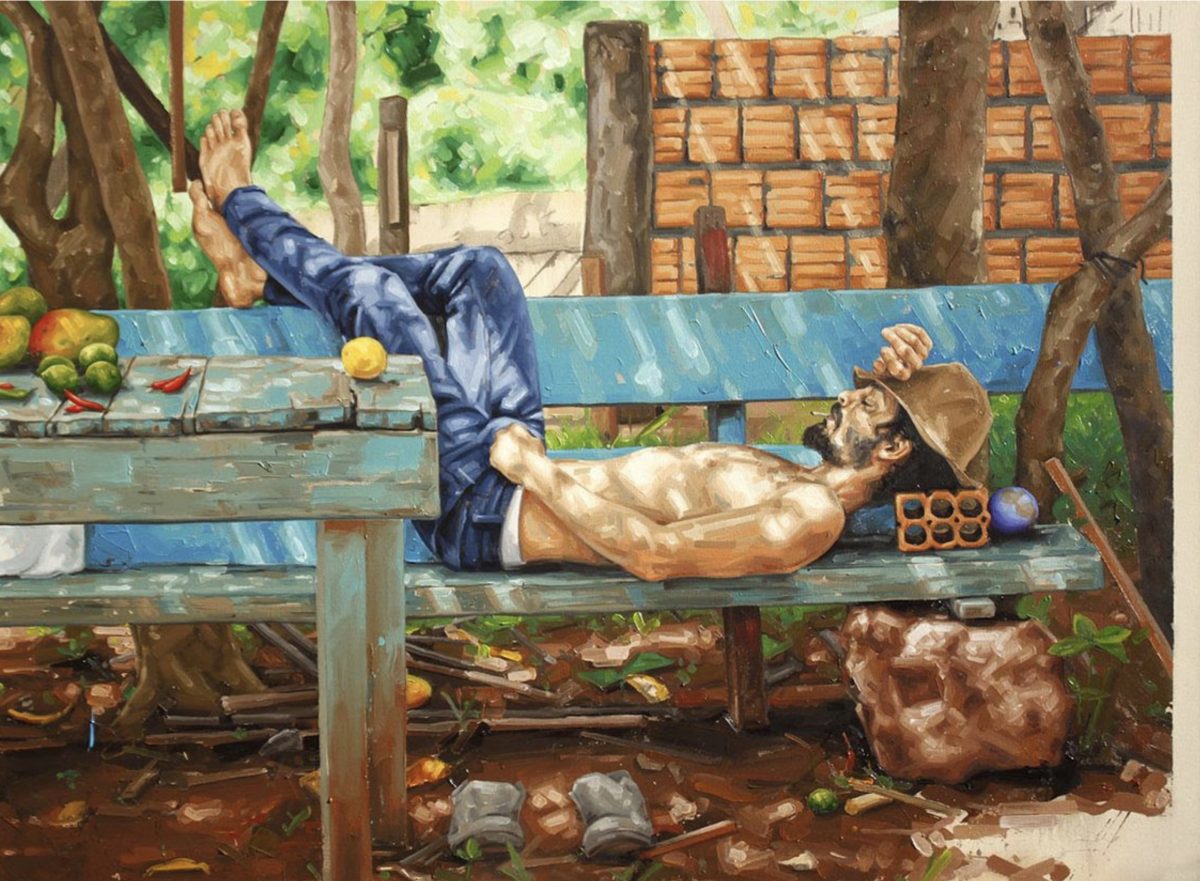
Fábio Baroli: Genesis 3, oil on canvas, 2013, 110 x 150 cm
If we understand traditional visual narratives as a record of the social and aesthetic conduct that characterizes a group of people who belong to a particular time, a particular place, and a particular culture, then we must acknowledge the traditional character and the traditional dimension that are anchored in the work of this extraordinary artist. The traditional genres of painting, like portrait, landscape and still life, are blended and superimposed within his work. All of this while drawing on a first-rate technique and an enormous capacity to capture the substance of any situation. In such a way, his painting can, for all intents and purposes, be thought of as a kind of cinematic practice or as a singular approach to conserving the reality he observes. Undoubtedly, both possibilities allow him to decentralize the codes of modern life, as well as to induce a crisis in the strange connection that stretches between growing technologization and a certain nostalgia for the past, or for what is, anthropologically speaking, considered inferior.
Any reading represents a penetration into the reality of the other and is an indiscreet approach, which reveals the ascent and descent of the narrative, visual, and symbolic systems in connection with their historical horizon. In this respect, every reading implies the segmentation, limitation, and reduction of our world, which is observed and measured on the basis of scientific, intellectual, or artistic parameters. However, in the concrete case of Baroli, the description is not kept at an admiring distance, or limited to the usual form of expression that one encounters when dealing with the cultural values of another. On the contrary, his painting is an essential part of this reality. He conceives of himself as a part of this time and this place, and he recognizes his ties to the soul of the things that he renders and reflects. The ethnographic and colonial visions of lo latinoamericano (what is referred to as “the Latin American”) have generated oceans of pages, informed by distortions, mitigations, and omissions. Therefore, it is the case that the natural conditions and the cultural information that appear in the pictures of the artist aspire towards a new perspective on things.
On the other hand, Baroli’s work does not arise from the description of the tourist or the stranger, who indulges in depicting the weakness of archetypes and typologies; rather, he achieves precision via proximity, in order to touch the naked nerve of this culture, which is subjected to these endless meaningless and superfluous assertions. Fábio paints with an absolutely convincing honesty and encodes a universe out of situations, gestures, and practices, which constitute a map on which reading yields to the act of writing. Latin America has had enough of its open and exposed veins, of so many warped and fetishistic readings, of the carnivalesque and nostalgic approaches. Fábio Baroli’s Latin America, rural and agrarian, decentralized and peripheral, presents itself under the seal of authenticity and a thirst for knowledge. The culture does not require any more instructions, any more sober prescriptions; it requires, urgently in fact, the liberation and the recovery of innovation, the magnetization of the authentic, the naturalization of its everyday rituals; rituals which were transformed into a scene of the exotic by the colonial gaze. As a direct/perverse consequence of a self-serving falsification of reality, the thirst for Western distinctiveness has displaced the role of the Latin American artist and reduced his art and its functions (as well as representations) to those of the anthropologists and ethnographers of the moment.
Baroli’s surfaces display his influential links to photography and his penchant for collage as a resource that enables him to create a colorful, constantly changing vision of the world. His magnificent compositions enable the interfaces of this process of development and assembly, similar to the operation of digital software, to become visible. Moreover, at the same time, they virtually embody the idea of the palimpsest, which is one of the most apposite metaphors to describe the time and the reality of Latin America. Paradoxically, the depth and wealth of his painting is illustrated through its lightness and transparency. They demonstrate the signs of cultural resistance and the unconditionality of individual language. His painting is text and magnet.
Andrés Isaac Santana
(Translation from German into English: Alexandra Skwara)
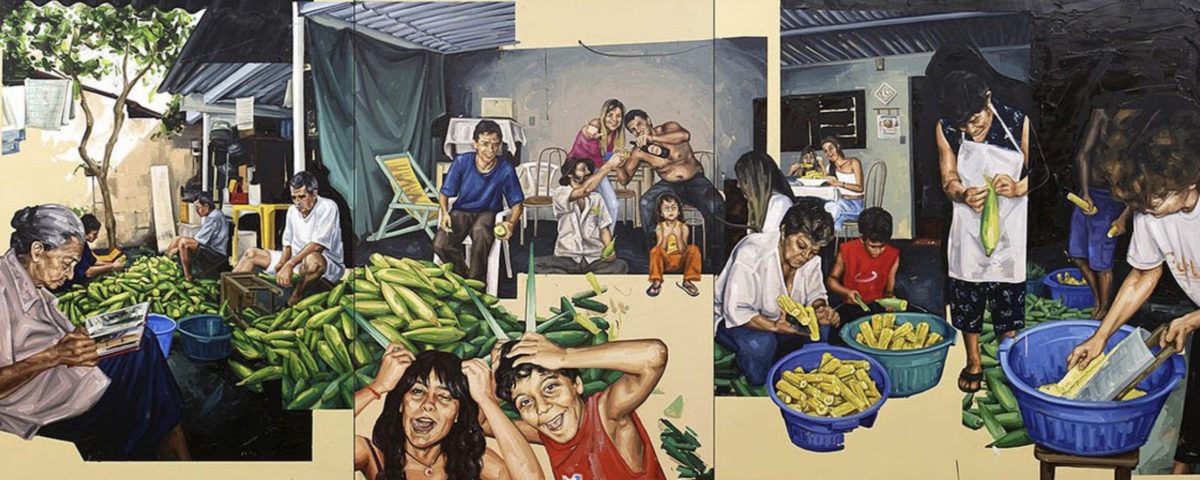
Fábio Baroli: Com milho crú, oil on canvas, 2014, 150 x 370 cm (triptych)
Fábio Baroli
Wo der Wind sich dreht / Where the wind turns
Curated by Andrés Isaac Santana
May 07 - June 18, 2022
MÜHLENGASSE 3 | 40213 DÜSSELDORF







